What I Do for Sport
07/02/2022. I use a reasonably fast computer (i7, hexacore, slightly over-clocked, 32GB of RAM, SSD's everywhere that matters). It takes about an hour to do steps 1-6 with minimal human intervention. Steps 7-11 are human-directed, so they take as long as I take. Try to imagine performing this process by hand, starting with ten thousand huge sheets of paper each with seven million numbers written in rows and columns to record the brightness of each pixel. I wonder how the process could be divided among an arbitrary number of clerks, clerics, or grad students. I wonder if it could be finished in one lifetime. Somewhere along the way, I get boggled, pixelated, and o'erwhelm-ed.
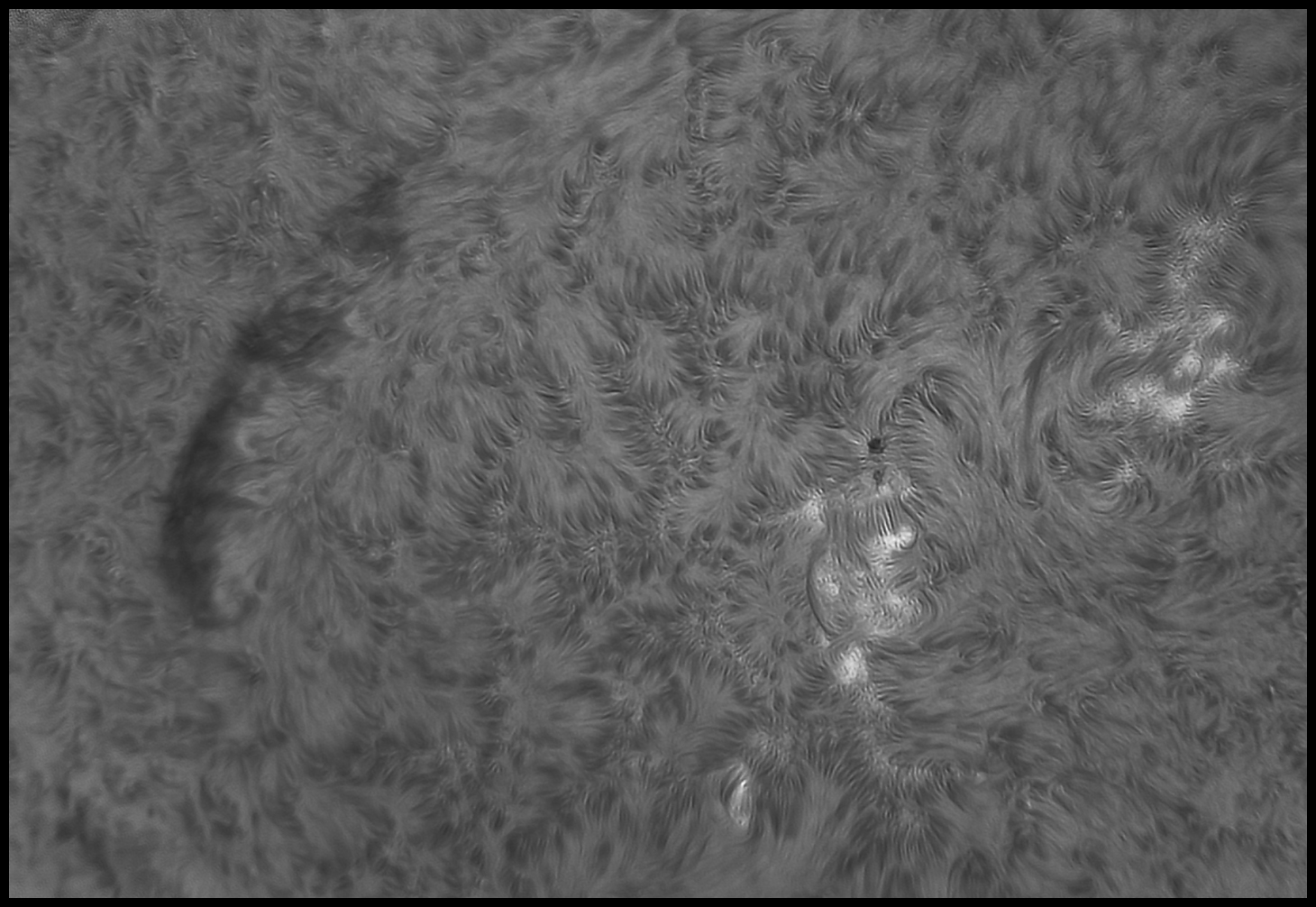
To view the work a thousand monks more clearly, click it.
Best 3,000 frames from a clip of 10,000 full-frames.
Parity gain, gamma off.
- Take 10,000 seven-megapixel 8-bit photos of the Sun one after another -- at 50fps, that takes about three minutes and occupies roughly 50GB of storage.
- Rough-align all the frames on some chromospheric detail.
- Divide each frame into ~350 sections of about 20,000 pixels each.
- Select the sharpest 3,000 images of each section.
- Take the average of the 3,000 pixels at each of the 20,000 pixel locations in each section. Each pixel can range from 0-255; store their mean value scaled to an integer from 0-64,000 (or maybe as a 16 bit fraction).
- Stitch the 350 sections back together into a full frame; that is, write a new master sheet with rows and columns for seven million numbers ranging from 0 to 65,535.
- Deconvolve the frame, comparing individual pixels to several neighbors and adjust outliers to sharpen details and reduce noise; do that 70 times.
- Reduce any remaining noise statistically, again comparing each pixel to several neighbors and replacing outliers with scaled values.
- Adjust the numbers whereever they change rapidly from very high to very low using internal image characteristics (in the old days, that was called adjusting the image's accutance).
- Interpolate the data in the seven million numbers representing the full frame into a smaller set of one million numbers; while you're at it, rescale each number between 0 and 65,535 into a number between 0 and 255.
- Post the resulting summary on the web. There it is up above.
At every step, be thankful that Alan Turing and John von Neumann got it right. For the record:
- Step 1, Firecapture
AVI format; high speed mode; flatfielded using extra-focal image; unity gain; no gamma; ZWO ASI174MM camera; Toshiba i5 Toughbook; 90mm Orion achromat with Lunt internal etalon and focuser..
- Steps 2-6, AutoStakkart!3.
- Step 7, IMPPG
70 passes Lucy-Richardson deconvolution, parms set to taste, ringing suppressed; conservative unsharp masking; histogram selected to encompass all data points.
- Steps 8-10, Photoshop.
Denoise; emboss and offset layer; histogram adjust; resample.
07/03/2022. The big filament seen in yesterday's photo has detached, so today I used a 2400x2080 ROI to concentrate on the twin active regions. I waited for some broken alto-stratus to blow through, composing and focusing in the gaps, then taking another ten thousand frames in the clear. I might not have bothered except that the forecast called for excellent seeing, which is rare and often rewarding.
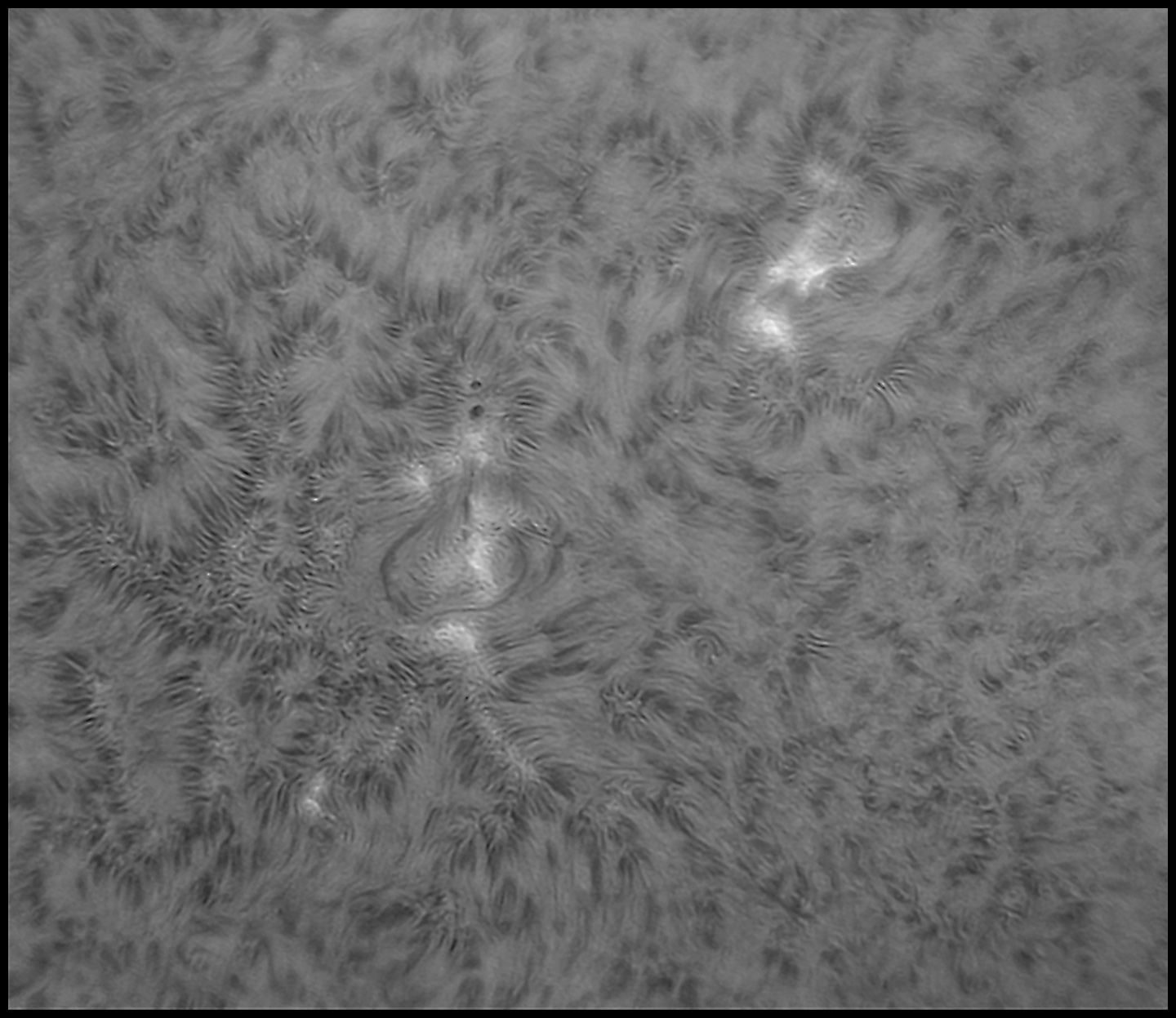
Best 200 of 10,000 frames.
It can still be big.
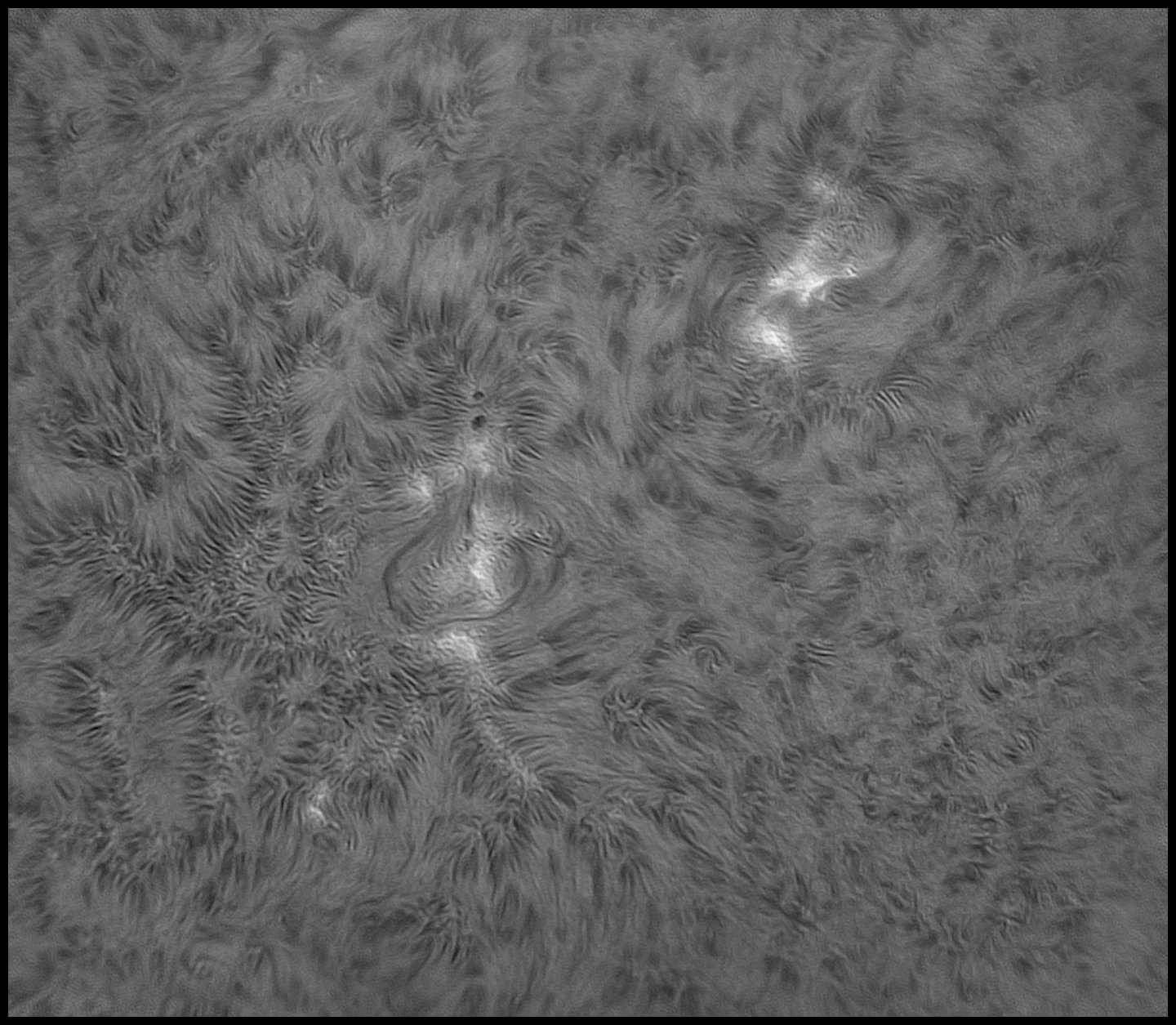
Best 3,000 of 10,000 frames.
Make it big, then tell me what the difference is.
During processing steps, it was not at first apparent that an image built from 3,000 out of 10,000 frames is superior to one made from 1,000 of the same frames. In very unsteady air, it could easily have gone the other way, but when the air is this steady, stack depth matters more than using only the sharpest instants. In IMPPG, zoom in and inspect detail while adjusted parms. If nothing else, the deeper stack licenses significantly more aggressive L-R devonvolution and USM before fine-grained noise intrudes.
Then I constructed an image from the best 200 of 10,000 frames. Even though noise would not be as effectively reduced, I fully expected an image built from a fillet of the best 2% of frames to display some advantage. But not today. I prefer the deeper stack in every regard -- I think tones and detail are both superior.
07/04/2022. I keep getting forecasts for excellent seeing, and since the Sun only clears the pines to the south of the house for a few weeks each year and since the clouds are scattered enough to make waits for clearing short... who am I to not take advantage? First, continuing the saga of 3047:
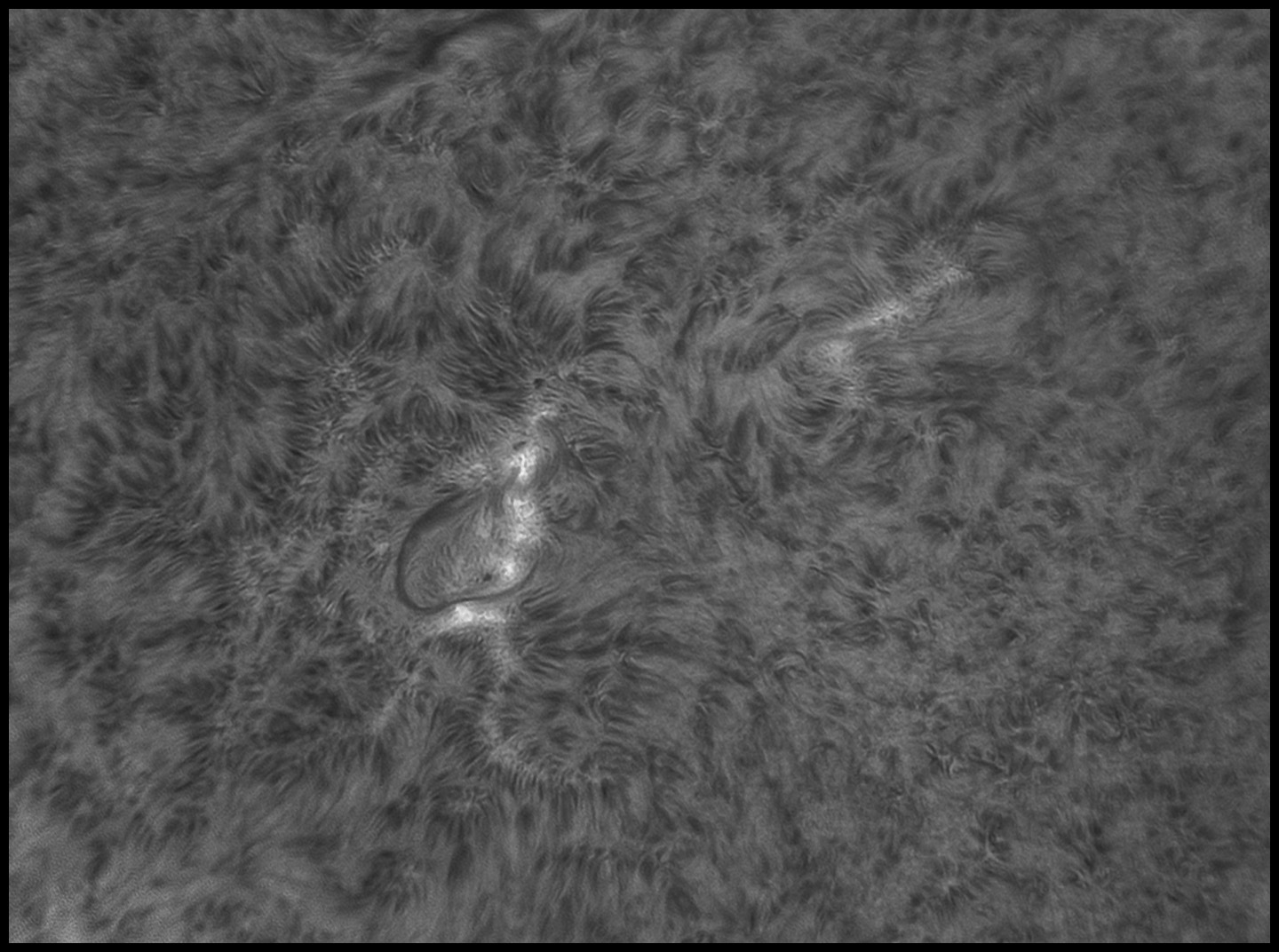
Best 300 of 1,000
Then developing 3046 which rotated into view a few days ago. It's thrown some decent flares in the last 24 hours, but none while I was watching.
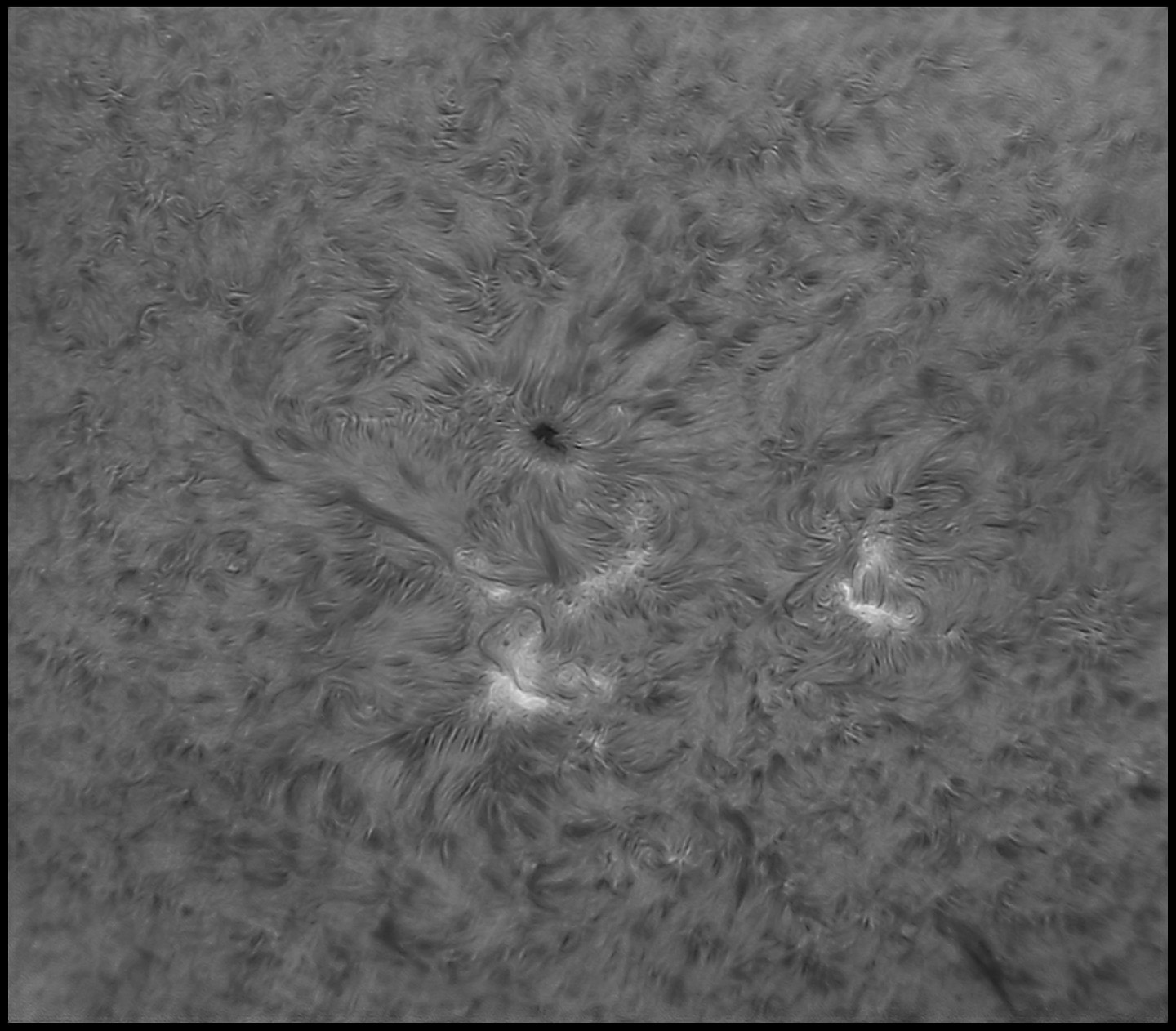
3,000 out of 10,000
A couple of filaments associated with 3049 and a prominence on the limb that I didn't see until too late to reframe the shot:
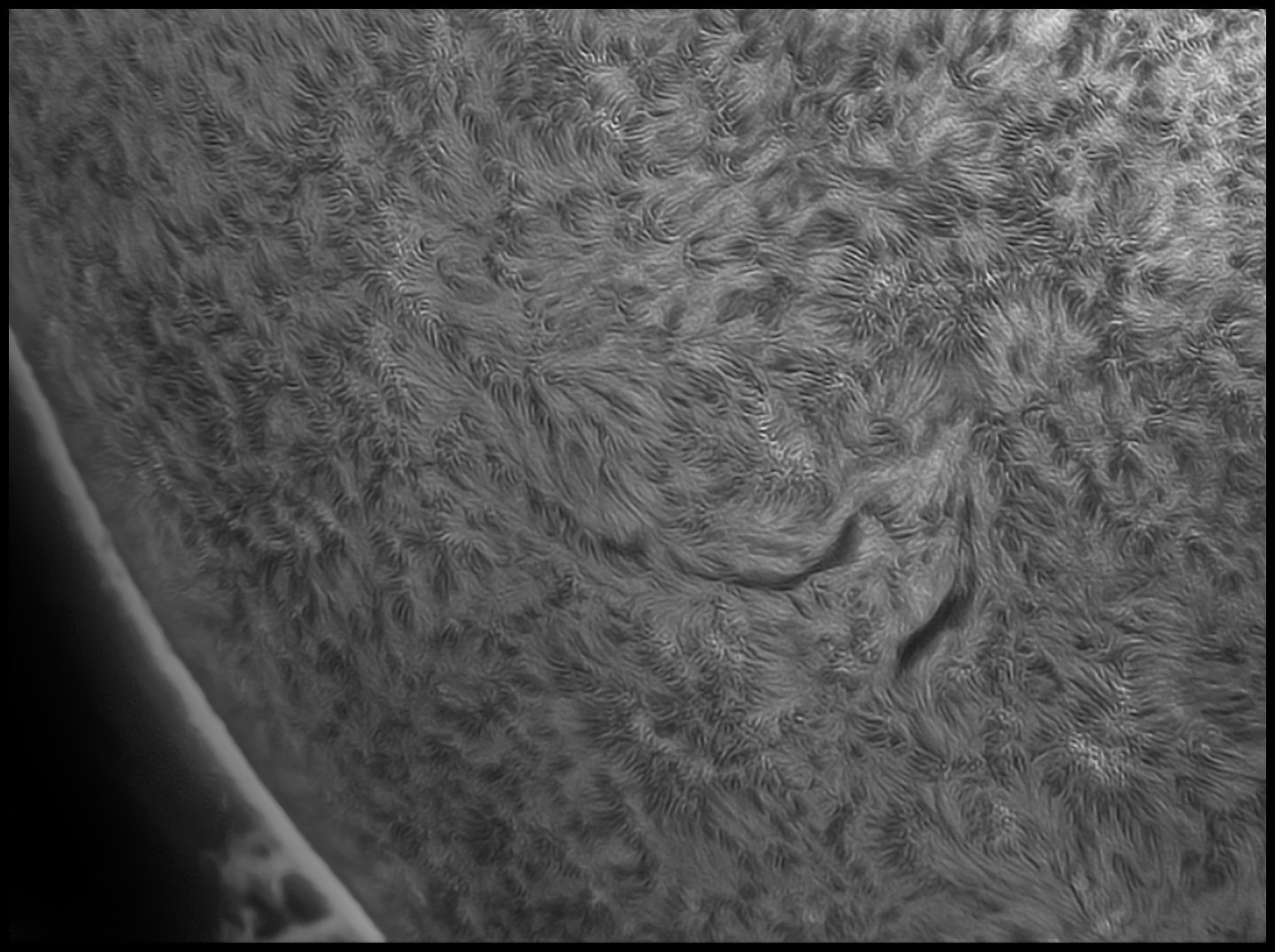
Best 300 of 1,000
Next, this unidentified, brightly flaring newcomer with some very bright activity coming over the hill as well (eta, as of July 5, they have names: 3052 and 3053 may be rising stars for next week):
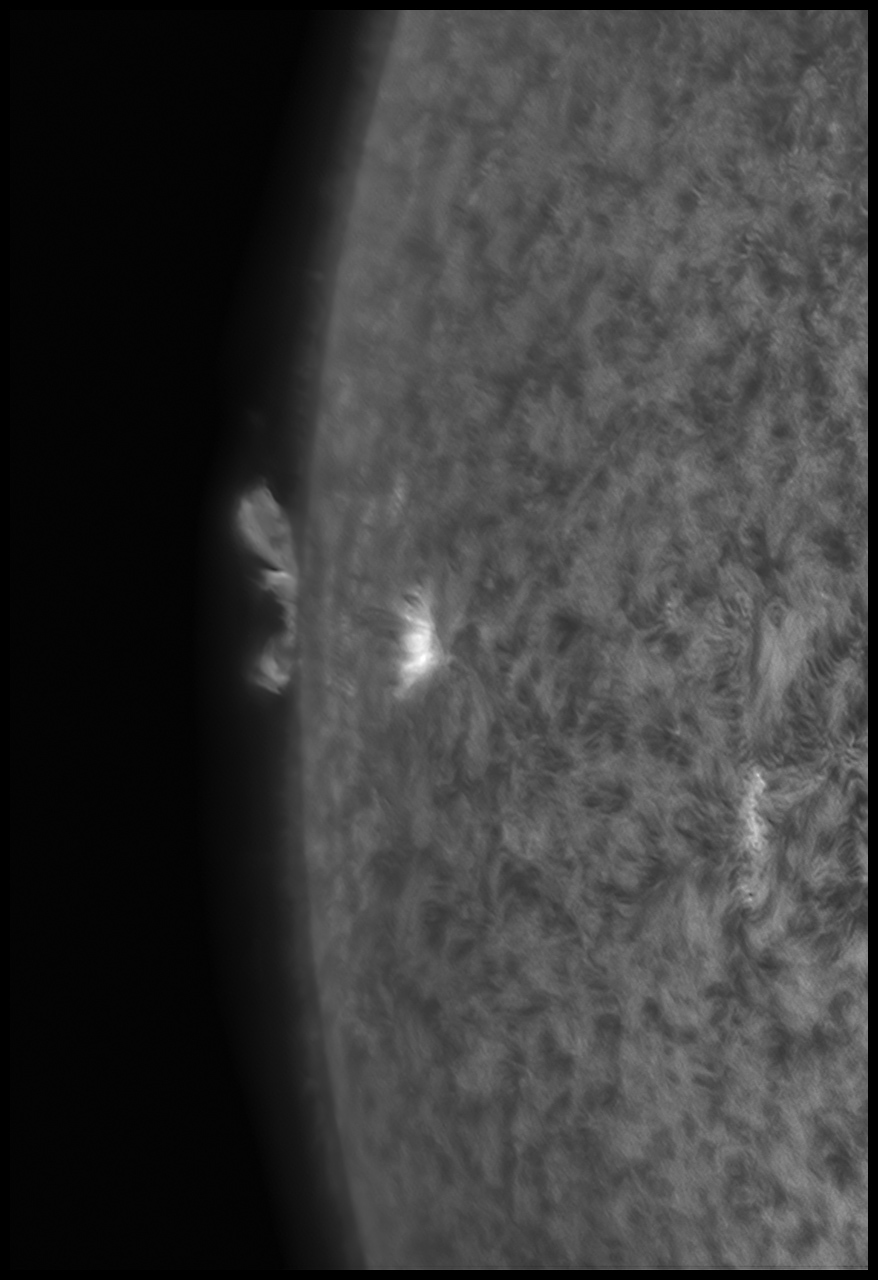
Best 1,000 of 3,000.
Finally, it's worth noting that Firecapture on the Toughbook celebrated the 4th. The splash screen that comes up on launch featured a waving flag. Nice touch.